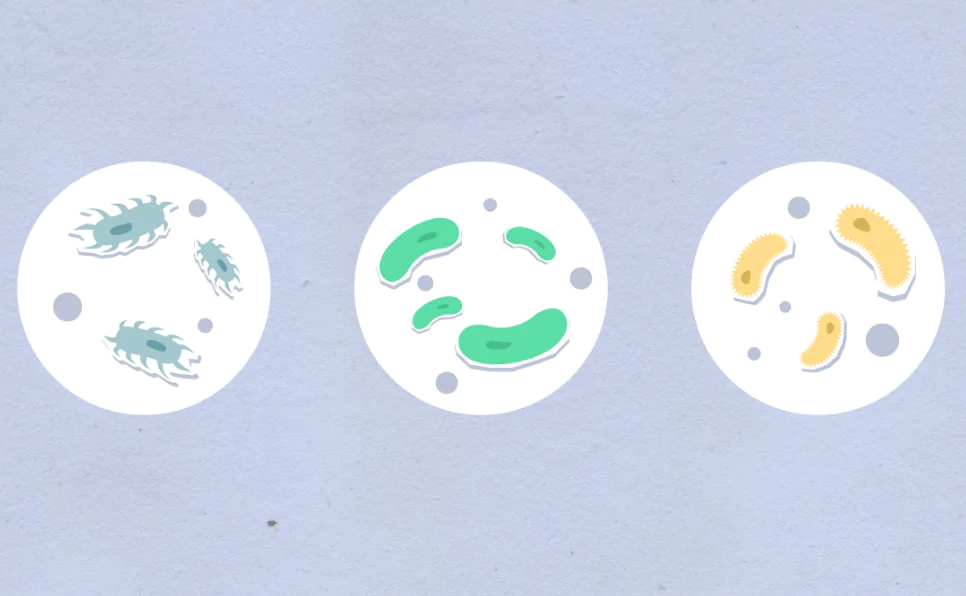Leber Hereditary Optic Neuropathy (LHON) is a condition that not many outside of those directly affected- or those in the genetic sciences- might know about.
But for those who are affected, understanding LHON is crucial.
It’s a form of genetic disorder primarily affecting the eyes and leading to vision loss.
Genetics plays a crucial role in the development of LHON, hence understanding it can have serious effects on its management.
It’s about getting to the root of the problem, which in this case, lies in our DNA.
Key Takeaways
- LHON is a genetic condition primarily affecting the optic nerves, leading to vision loss.
- It is passed down through maternal inheritance due to its mitochondrial DNA origin.
- While there is currently no cure for LHON, treatment and management strategies can help improve quality of life.
What is Leber Hereditary Optic Neuropathy?
LHON is a condition that leads to vision loss, primarily in young men, though it can affect both genders.
The loss of vision typically starts in one eye followed by the other, eventually leading to bilateral vision loss.
This can be quite sudden or over a few weeks to months. What sets LHON apart from other types of optic nerve issues is its genetic basis.
The Genetic Basis of LHON
At the heart of LHON is our genetic makeup – specifically, mutations in mitochondrial DNA (mtDNA).
Unlike most of our DNA, which we inherit from both parents, mtDNA comes exclusively from our mother.
This is why LHON is passed down maternally.
Now, what does this mean in plain language? It means if a mother carries a mutation for LHON, her children may inherit the risk of developing the condition, but it is not inherited from the father.
Mitochondrial DNA and LHON
When mutations occur in mtDNA, it can disrupt how cells generate energy, particularly in the optic nerve cells, leading to the symptoms of LHON.
This connection between energy production and vision is a key aspect of why LHON happens.
Key Mutations Associated with LHON
There are three primary mutations identified with LHON: m.3460G>A, m.11778G>A, and m.14484T>C.
These mutations affect genes that are vital for the mitochondria’s function in energy production. Seeing these mutations in a genetic report can be a clear signal of LHON, but the presence of a mutation doesn’t guarantee that someone will lose their vision.
It’s a complex interplay between genetics and possibly environmental factors.
- m.3460G>A affects a gene MT-ND1 (mitochondrial ND1 gene) involved in the mitochondrial respiratory chain, which is crucial for energy production.
- m.11778G>A is the most common mutation and affects a gene MT-ND4 (mitochondrial ND4 gene) essential for converting energy into a usable form for the cell.
- m.14484T>C impacts another gene MT-ND6 (mitochondrial ND6 gene) involved in energy conversion, and interestingly, individuals with this mutation have a better chance of partial vision recovery.
Understanding these mutations is crucial for diagnosing LHON and can guide potential treatments and management strategies.
Symptoms and Diagnosis
Leber Hereditary Optic Neuropathy (LHON) primarily affects the eyes, leading to central vision loss.
This condition usually starts in one eye and then progresses to the other, often within a few weeks or months. Symptoms include:
- Blurred vision
- Loss of sharpness in vision
- Difficulty seeing fine details
- A sudden decrease in central vision
Visual Impairment and Progression
The progression of LHON varies among individuals, but typically, vision loss is most rapid in the initial stages.
Over time, some individuals may experience a partial recovery of vision, though this is rare. The degree of visual impairment can vary widely.
Diagnostic Approaches
Genetic Testing for LHON
Confirming a diagnosis of LHON usually involves genetic testing to identify mutations in mitochondrial DNA that are known to cause the condition.
This testing is crucial as it can confirm the diagnosis, help predict the risk of passing the disorder to children, and inform about the course of the disease.
Role of Eye Examinations and Imaging
Comprehensive eye exams and imaging tests such as Optical Coherence Tomography (OCT) and Fundus Photography are pivotal in diagnosing LHON.
These tests help visualize the optic nerve and retinal nerve fiber layer, often revealing characteristic signs of the disease even before symptoms appear.
Understanding the Risk Factors
LHON is passed down maternally, meaning it’s inherited from the mother. This pattern is due to the condition being linked to mutations in mitochondrial DNA, which we all inherit exclusively from our mothers.
If a mother carries the mutation, all her children have a risk of inheriting the condition.
Environmental and Lifestyle Factors Influencing LHON Expression
While LHON is primarily genetic, factors like smoking and alcohol use can influence disease expression.
It’s been observed that these factors can increase the risk of vision loss among carriers of the mutation.
Treatment and Management Strategies
Treatment options for LHON are limited but evolving. Historically, management focused on supportive care, but recent advancements offer some hope.
Gene Therapy Advancements
Recent years have seen significant progress in gene therapy for LHON, aiming to introduce healthy copies of genes to compensate for the dysfunctional ones.
These therapies are still under clinical trials but have shown promising results in improving vision in some patients.
Mitochondrial Replacement Therapy
Mitochondrial replacement therapy (MRT) is another innovative approach, though more controversial and less direct.
It’s aimed at preventing the disease in future generations rather than treating current patients.
Management Strategies for Living with LHON
Visual Aids and Rehabilitation
Adapting to life with vision loss involves utilizing visual aids and undergoing vision rehabilitation to maximize remaining vision.
Tools like magnifying devices and text-to-speech software can be incredibly helpful.
Support Networks and Counseling
Connecting with support groups and seeking counseling are vital for emotional and psychological well-being.
These networks provide a platform for sharing experiences and coping strategies, which is invaluable.
Ongoing Research in LHON
For treating LHON disease researchers are exploring gene therapy, stem cell treatment, and novel pharmaceuticals to halt or reverse the progression of the disease.
Emerging treatments like neuroprotective agents and strategies to enhance mitochondrial function are under investigation.
These future therapies hold the promise of better management or even a cure for LHON.
Final Thoughts
LHON is a complex condition with significant impacts on those affected and their families.
While the journey from symptoms to diagnosis can be challenging, understanding the genetic underpinnings and risk factors is crucial for managing the disease.
Current treatments are limited but evolving, with research focused on innovative solutions to minimize vision loss and improve quality of life.
For those affected by LHON, participation in clinical trials and engagement with support networks can provide not only potential access to new therapies but also a sense of community and empowerment.
FAQs
Can lifestyle changes impact the progression of LHON?
Yes, lifestyle changes can influence the progression of LHON. Avoiding smoking and limiting alcohol consumption are recommended, as these factors can exacerbate the condition. Maintaining a healthy lifestyle may help manage symptoms and possibly slow disease progression.
Are there any preventive measures for those at risk of developing LHON?
While there’s no guaranteed way to prevent LHON, understanding genetic risk through testing can help. For those at risk, avoiding environmental triggers like smoking and excessive alcohol can be beneficial. Regular eye exams are also important to monitor vision health.
How does genetic counseling benefit families affected by LHON?
Genetic counseling provides families with crucial information about LHON inheritance, risks to other family members, and the implications for future generations. It offers support in making informed decisions about family planning and managing the condition.
What are the latest advancements in gene therapy for LHON?
The latest advancements in gene therapy for LHON include treatments aimed at replacing or repairing the faulty mitochondrial genes responsible for the condition. Clinical trials have shown promising results, with some patients experiencing significant improvements in vision.
Can individuals with LHON still lead productive lives?
Absolutely, individuals with LHON can lead productive lives. With the use of visual aids, rehabilitation, and support networks, many affected by LHON adapt to their vision loss, pursuing careers, hobbies, and activities with adjustments to accommodate their needs.
For Further Reading:
- Long-Term Follow-Up After Unilateral Intravitreal Gene Therapy for Leber Hereditary Optic Neuropathy: The RESTORE Study. Ophthalmology
- Visual prognosis better in eyes with less severe reduction of visual acuity one year after onset of Leber hereditary optic neuropathy caused by the 11,778 mutation. BMC Ophthalmology
- Developments in the Treatment of Leber Hereditary Optic Neuropathy. Current Neurology and Neuroscience Reports
- Current and Emerging Therapies for Leber Hereditary Optic Neuropathy. OPHTHALMOLOGY

Dr. Sumeet is a seasoned geneticist turned wellness educator and successful financial blogger. GenesWellness.com, leverages his rich academic background and passion for sharing knowledge online to demystify the role of genetics in wellness. His work is globally published and he is quoted on top health platforms like Medical News Today, Healthline, MDLinx, Verywell Mind, NCOA, and more. Using his unique mix of genetics expertise and digital fluency, Dr. Sumeet inspires readers toward healthier, more informed lifestyles.





